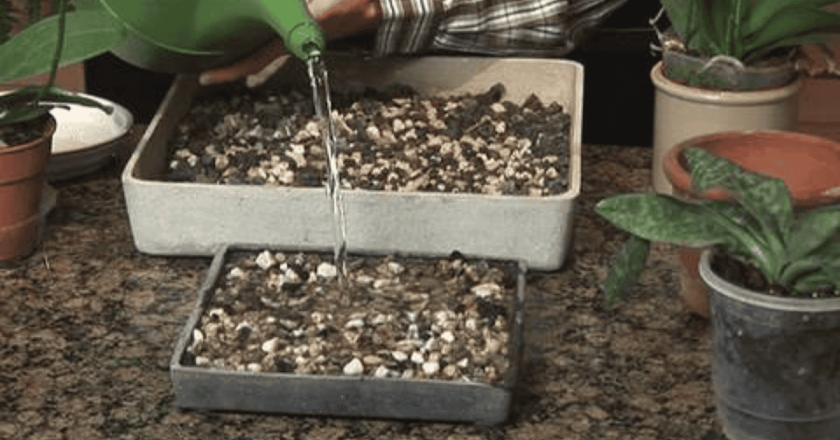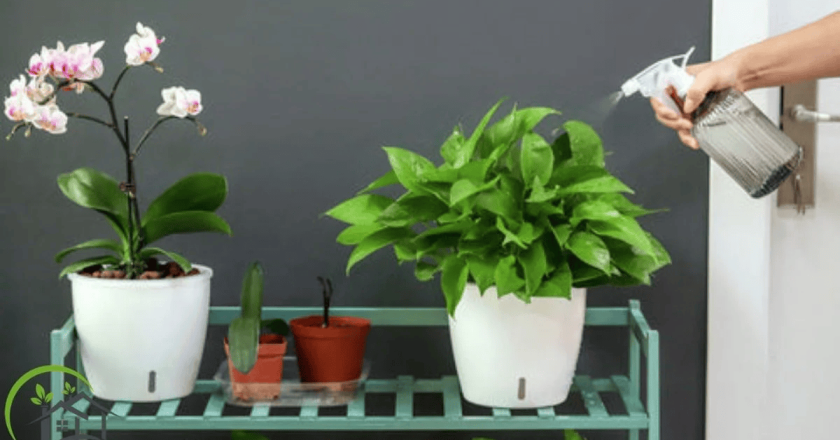I’ve often thought about how much difference a few green touches can make to a balcony. You step outside with a cup of tea—or maybe just to stretch your legs—and suddenly the space feels alive. But, of course, there’s always that nagging problem: not every plant can handle the changing weather. Wind, rain, blazing sun—it all takes a toll.
So, the real question is: which balcony plants can you count on all year? Plants that don’t just survive but look good, even when the seasons change and the elements test them? That’s what this guide is all about.
It’s not a rigid list. More of a thoughtful journey through possibilities, ideas, and, honestly, a few mistakes I’ve seen (and made) along the way. You’ll find a mix of practical tips, small opinions, and maybe even some plant-love confessions.
Why Balcony Plants Need to Be Tough
A balcony isn’t a garden. That sounds obvious, but I think sometimes people forget it. The space is elevated, exposed, and very often at the mercy of weather conditions you wouldn’t face on ground level.
Wind whips through more freely. Rain doesn’t soak in evenly—it splashes, it collects, sometimes it barely touches certain corners. And the sun? Depending on your building’s direction, it can either scorch relentlessly or barely peek in.
That’s why the choice of balcony plants matters. They need to be versatile. They should be what we call year-round plants—steady performers that don’t throw tantrums when the weather gets unpredictable.
And yes, they should still look nice. Beauty counts.
A Quick Thought Before the List
I should admit something: no plant is entirely “weather-proof.” Even the hardiest ones need care. Think of it like people—we might tolerate the rain, but we still grab a jacket. Plants are similar. A little positioning, a little pruning, maybe some shielding in extreme conditions, and they’ll reward you.
So, as I go through these recommendations, keep in mind: this isn’t about finding magical plants that thrive on neglect. It’s about finding easy balcony plants that give you the best chance of success.
1. Geraniums – The Classic Balcony Choice
Geraniums are almost cliché when it comes to balcony gardening, but for good reason. They handle wind better than most delicate blooms, and while too much rain can bother them, their resilience is impressive.
They’re sun-lovers too. On bright balconies, they flourish, giving you color that feels almost Mediterranean. Just remember to deadhead the flowers; otherwise, they can look a bit tired.
(If you enjoy flowering plants indoors as well, you might like learning about Peace Lily care.)
2. Lavender – Sun, Wind, and a Little Magic
Lavender is more than just a plant—it’s a mood. The scent alone can transform a balcony into a calm retreat. It’s one of those plants for sun that doesn’t just cope, it thrives.
Wind doesn’t faze it much, and it can shrug off dry conditions that would weaken fussier plants. The one catch? It doesn’t adore heavy rain. But in a container with good drainage, it’s fine.
I’ve seen lavender plants stand strong on balconies through storms that flattened weaker flowers. They may get a little messy, but they bounce back.
3. Boxwood – Evergreen Strength
For year-round structure, boxwood is unbeatable. These compact shrubs are reliable outdoor plants that keep their color even in winter.
They’re surprisingly tolerant of different weather, whether it’s rain splattering down or wind rushing by. The sun is fine too, though they prefer not to be scorched all day.
Boxwood can also be shaped. If you enjoy a bit of garden artistry, trimming them into spheres or cones gives your balcony a more polished look.
(For more ideas on hardy greenery, see low-maintenance outdoor plants.)
4. Herbs – Practical and Pretty
I can’t ignore herbs. Rosemary, thyme, mint—they’re not just useful in the kitchen, they’re excellent balcony plants.
Rosemary in particular is a champion. It loves the sun, handles wind with ease, and rain doesn’t scare it. Mint, on the other hand, likes a little more water but grows like it’s in a hurry.
The best part? Every time you cook, you can step outside and snip a handful. That’s a pleasure you won’t get from purely decorative plants.
5. Succulents – Sun Lovers with a Twist
Now, some people might warn against succulents on balconies. And yes, too much rain can drown them. But in well-drained pots, they can handle both sun and wind beautifully.
They’re not exactly lush in the traditional sense, but their shapes and textures add something different. Aloe vera, echeveria, jade plant—each one adds personality.
(If you like statement greenery, take a look at oversized indoor plants. Some thrive outdoors, too.)
6. Ferns – Rain Lovers
Not every balcony is scorching. Some are shaded, even damp. In that case, ferns are your friends. They’re perfect plants for rain and don’t mind a little wind either.
Boston fern and maidenhair fern are two good choices. They’re lush, dramatic, and soften the harder edges of a balcony railing or wall.
(Bathrooms are another surprising place for ferns. You can see more in the best plants for bathrooms.)
7. Snake Plant – Indestructible Beauty
You might already know the snake plant, or Sansevieria. It’s often recommended indoors, but honestly, it works outdoors too—especially on balconies.
It’s one of those rare year-round plants that doesn’t flinch at changing conditions. Sun, shade, wind—it takes it all in stride. Rain? As long as it drains, no problem.
And it has that architectural look. Sharp lines, upright growth—it balances the softer forms of other plants.
(For a full guide, check snake plant care.)
8. Money Tree – A Touch of Luck Outdoors
This one surprises people. The money tree (Pachira aquatica) can actually be grown outdoors on balconies, provided the conditions aren’t extreme.
It likes humidity, tolerates some wind, and enjoys bright but indirect sun. Rain isn’t a problem unless it’s constant.
Some people keep it indoors for good fortune, but placing it outside gives it room to grow bigger, fuller.
(If you’re curious, here’s more about money tree care.)
9. Christmas Cactus – Seasonal Charm
Not all cacti love rain, but the Christmas cactus is different. It thrives in partial shade and enjoys moisture far more than desert types.
On a balcony, it offers bright, surprising flowers at a time of year when many other plants look tired.
It’s a reminder that “cactus” doesn’t always mean dry.
(You can dive deeper into Christmas cactus care.)
10. Hardy Grasses – Movement and Texture
Ornamental grasses don’t always get enough credit. They handle wind gracefully—actually, they look better swaying in it. Rain? No problem. Sun? Most species love it.
Varieties like fountain grass or blue fescue are particularly suited to balcony gardening. They add texture and motion, making the space feel more natural.
Balancing Sun, Wind, and Rain
It’s worth pausing to say: you don’t need a single type of plant. A successful balcony is a mix. Some plants for sun, some plants for wind, maybe one or two plants for rain—together, they balance the environment.
It’s a bit like putting together a team. Each plant plays a role. One provides color, another structure, another fragrance. Collectively, they make your balcony feel alive in every season.
A Few Practical Tips for Balcony Gardening
-
Containers matter. Drainage is everything. A good pot can make even fussy plants easy.
-
Group plants. They shelter each other from the wind and create microclimates.
-
Rotate occasionally. If sun exposure isn’t even, move your pots around every few weeks.
-
Mix evergreens with seasonal bloomers. That way, you always have something alive to look at.
🌿 Key Takeaways
-
Balcony plants need resilience. Wind, rain, and strong sun can stress most greenery—choosing hardy, year-round plants makes life easier.
-
Mix matters more than one “perfect” plant. Combining sun-lovers, shade-tolerant varieties, and moisture-friendly types gives balance across seasons.
-
Containers and drainage are everything. Even the hardiest plant fails if water sits in its roots. Good pots = healthier plants.
-
Classic choices still shine. Geraniums, lavender, snake plants, and herbs keep proving why they’re balcony favorites.
-
Beauty meets function. From fragrant lavender to edible herbs, the best balcony plants don’t just look nice—they make the space feel alive and useful.
Final Thoughts
Balconies can be tricky. They’re small, exposed, and often unpredictable. But with the right balcony plants, you can turn that little patch of outdoor space into a green haven—something that feels alive no matter the season.
And maybe, just maybe, that’s the point. It’s not about creating perfection. It’s about creating a place that feels good to step into. A place where plants, against the odds of wind, rain, and sun, continue to thrive.
(If you’d like more inspiration, see guides like low-maintenance plants that thrive or office plants that perk up workspaces. Even though they’re not balcony-specific, the lessons carry over.)
❓ FAQs
Q1: What plants survive best on windy balconies?
A: Hardy grasses, geraniums, and lavender are great. Their stems are flexible, so they bend rather than break in strong winds.
Q2: Can balcony plants really survive heavy rain?
A: Yes, but the pot matters. Ferns and Christmas cacti enjoy moisture, while others just need well-drained soil to prevent rot.
Q3: Do I need to bring balcony plants indoors in winter?
A: Not always. Boxwood, snake plant, and rosemary can stay outside year-round. More delicate plants may need shelter during frost.
Q4: Which balcony plants are easiest for beginners?
A: Snake plants, mint, and geraniums are forgiving. They tolerate sun, wind, and occasional forgetfulness in watering.
Q5: How do I keep balcony plants alive in full sun?
A: Choose sun-lovers like lavender, rosemary, and succulents. Also, water deeply in the morning so the soil retains moisture through the day.




